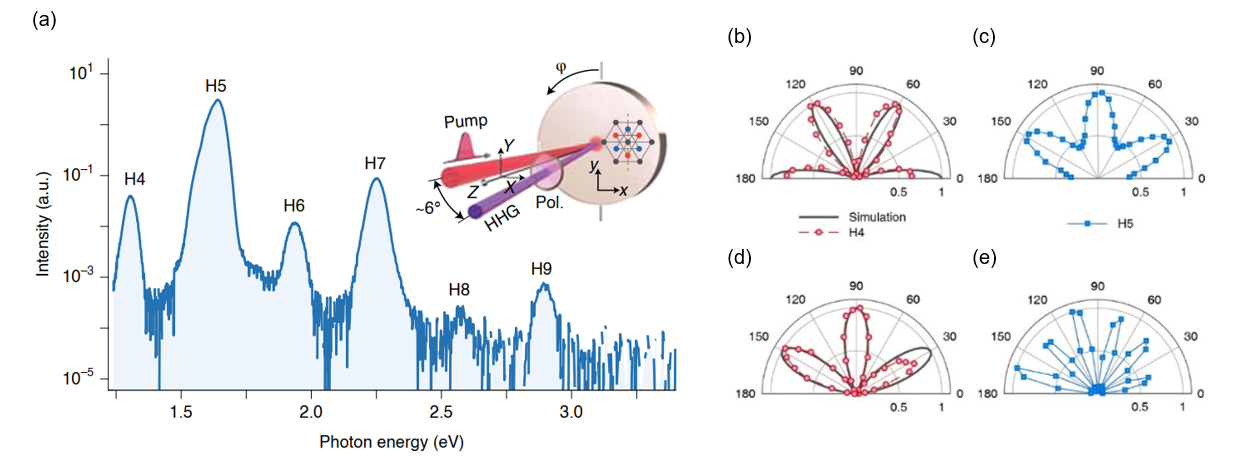Research groups of Shanghai Institute of Optics and Fine Mechanics, Chinese Academy of Sciences, and Nanjing University have observed the strong field-driven phenomenon from topological nontrivial states. They demonstrate for the first time the high-harmonic generation from topological surface states. This work was published in Nature Physics on 23 November, 2020.
Because of the pioneering research of topological phase transitions and topological phases of matter, three physicists were awarded the 2016 Nobel Prize in Physics. Three-dimensional topological insulators (3D TIs) are a phase of matter that hosts unique spin-polarized gapless surface states protected by the time-reversal symmetry and exhibits unconventional charge and spin transport properties. However, the research of its nonlinear phenomenon driven by strong laser fields is still in its infancy. Recently, theoretical studies have predicted that in a low-dimensional topological system high-harmonic generation (HHG) is sensitive to topologically non-trivial phases. These findings make the experimental observation of topological-based-HHG more appealing.
In the study, they showed the observation of HHG from 3D TIs, driven by linearly polarized strong laser pulses delivered from a self-built long-wavelength intense laser system. HHG spectra up to ninth-order are observed (Figure (a)). The polarization components (parallel and perpendicular) as a function of the crystal orientation are also measured (Figure (b)-(e)). The magnitudes and polarizations of the even- and odd-order harmonics, modulated by the azimuth orientation, behave differently. It has been revealed that the components of the even-order harmonics along the pump polarization stem from the spin current in helical surface states, whereas the perpendicular components originate from the out-of-plane spin polarization.
The finding provides a method for isolating the charge and spin transportation in surface and bulk. The strong field phenomenon provides an effective tool to investigate the interaction between the TSS and bulk states in 3D TIs, where both the non-perturbative spin and charge dynamics co-exist with versatile controllability. The research fuels broad interests in future studies of the strong-field phenomenon from topological surface states.
This project was supported by the National Natural Science Foundation of China, the Strategic Priority Research Program of the Chinese Academy of Sciences, the Scientific Instrument Developing Project of the Chinese Academy of Sciences, and the Shanghai Municipal Development and Reform Commission.

Article website:
https://doi.org/10.1038/s41567-020-01052-8
Contact:
WU Xiufeng
General Administrative Office
Shanghai Institute of Optics and Fine Mechanics, CAS
Email: xfwu@siom.ac.cn
Web: http://english.siom.cas.cn/